Maryland is a U.S. state also called “America in Miniature” from time to time. Its variegated topography extends from gentle undulating grasslands, pine forests, coastal plains, and marshlands. The borders of Maryland surround 10,460 square miles and are home to about 450 species of birds, hummingbird species included.
There are predominately two kinds of hummingbirds that belong to Maryland: the Ruby-Throated hummingbird and the Rufous hummingbird.
There have also been regular sightings of several other hummingbird species in Maryland — enough to consider them habitants of Maryland. These are Allen’s (rare vagrant), Anna’s, Black-Chinned, Calliope, Mexican, Ruby-Throated, and Rufous hummingbirds.
Below you’ll find a detailed list of hummingbirds seen in Maryland.
Hummingbirds You Can Find in Maryland
The most common species of hummingbirds mainly live in the western hemisphere of the United States. The species native to Maryland arrive around the first week of May and leave for wintering grounds in a warmer climate in early September.
Allen’s Hummingbird
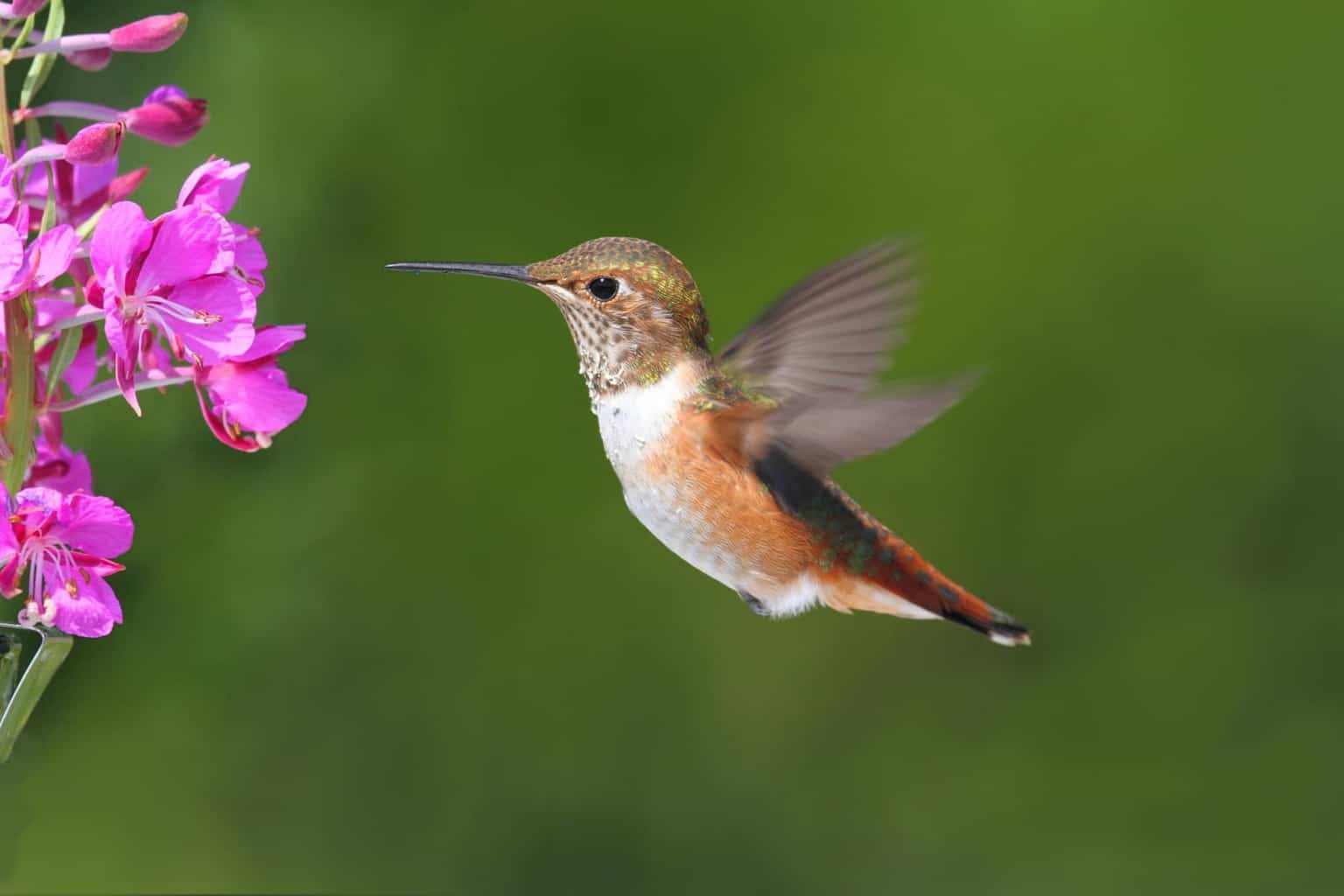
- Scientific Name: Selasphorus sasin
- Length: 3 – 3.5 inches
- Weight: 0.1 oz
- Wingspan: 3 inches
Description:
Allen’s hummingbird has a green-copper coloring with orange feathers down the front of its neck.
Females and young have a bronze-green tint and lighter shades of copper than males.
Allen’s hummingbirds have unique breeding rituals, performing an erratic, pendulum-style dance before diving from 100 feet in the air and releasing a burst of sound from their tail feathers.
Additional Information:
Compared to other hummingbirds of the United States, Allen’s hummingbird has a relatively early migration, leaving in early December, anticipating summer in the north.
The Allen’s hummingbird is a rare vagrant in Maryland, mostly residing in California and Oregon.
There are two acknowledged subspecies of Allen’s Hummingbird, each of which is slightly distinct from the other: the Sedentarius and the Sasin.
The male Sasin is sexually dimorphic and generates a unique trill at 9 kHz. The Sedentarius lives on the Channel Islands off the coast of California; it doesn’t migrate.
Anna’s Hummingbird
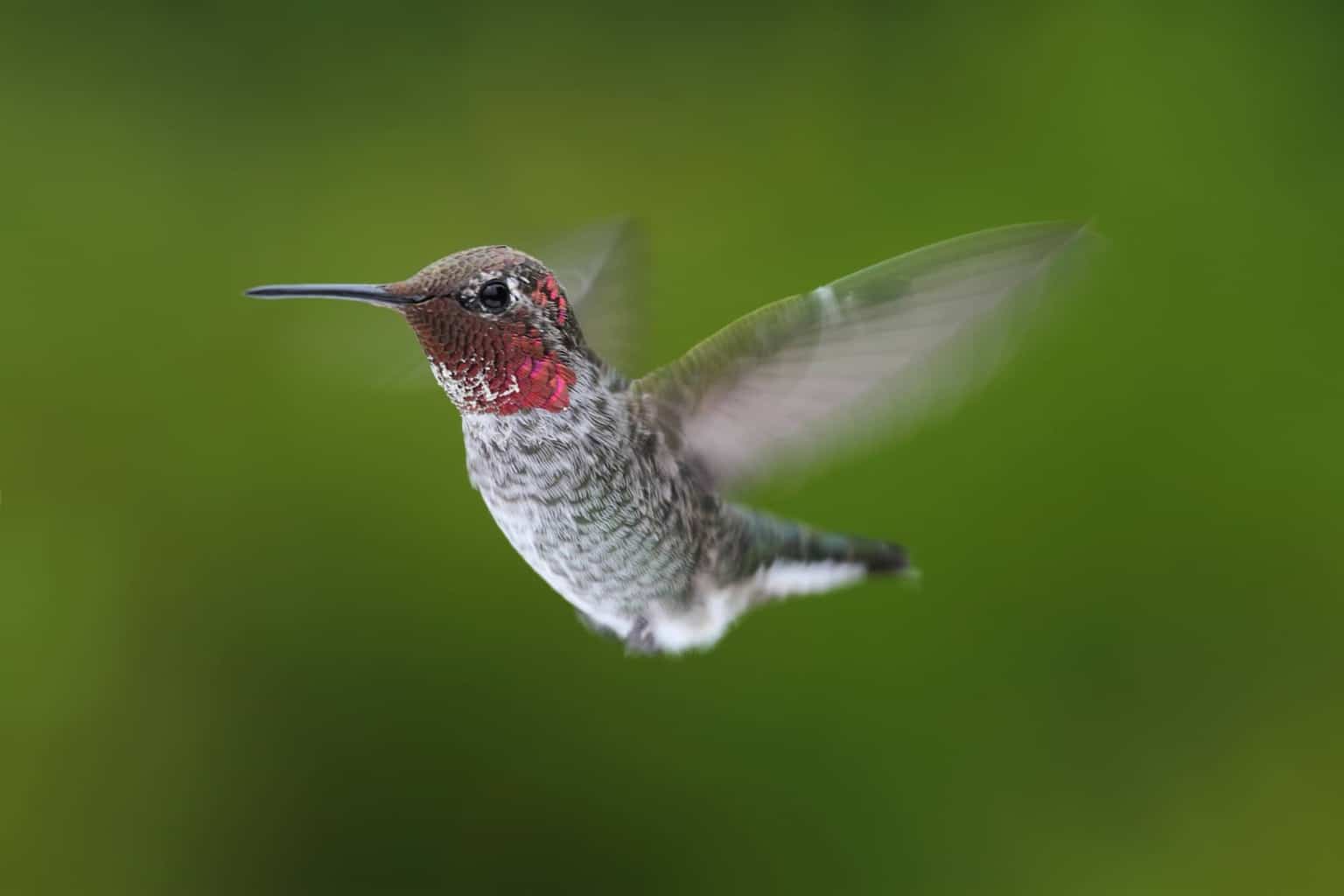
- Scientific Name: Calypte anna
- Length: 3.9 – 4.3 inches
- Weight: 0.1 – 0.2 oz
- Wingspan: 4.7 inches
Description:
Anna’s hummingbird is a stout, medium-sized bird with a long head. It is mainly gray, with emerald feathers; the males have rosy-pink throats, with red shades revealed in sunlight.
The dazzling throat pocket of the hummingbird is called a gorget. The male’s gorget reaches up past its head, making it appear hooded.
The male Anna’s hummingbird makes a distinct scratchy, metallic sound with its voice.
They have an exhilarating courtship dance; the male ascends 130 feet in the air and then dives with an unusual gust of sound through its tail feathers.
Additional Information:
Anna’s hummingbird is one of three hummingbird species residing permanently in the United States and Canada.
They live in the suburbs, wooded areas, coastal plains, savannahs alongside rivers, and eucalyptus groves. They will happily feed on any source of nectar, especially their favorite nectar feeders or an array of bright flowers, generally preferring red and orange tubular flowers.
On occasion, bees and wasps impale themselves on the beak of Anna’s hummingbird, causing the bird to starve to death.
Black-Chinned Hummingbird
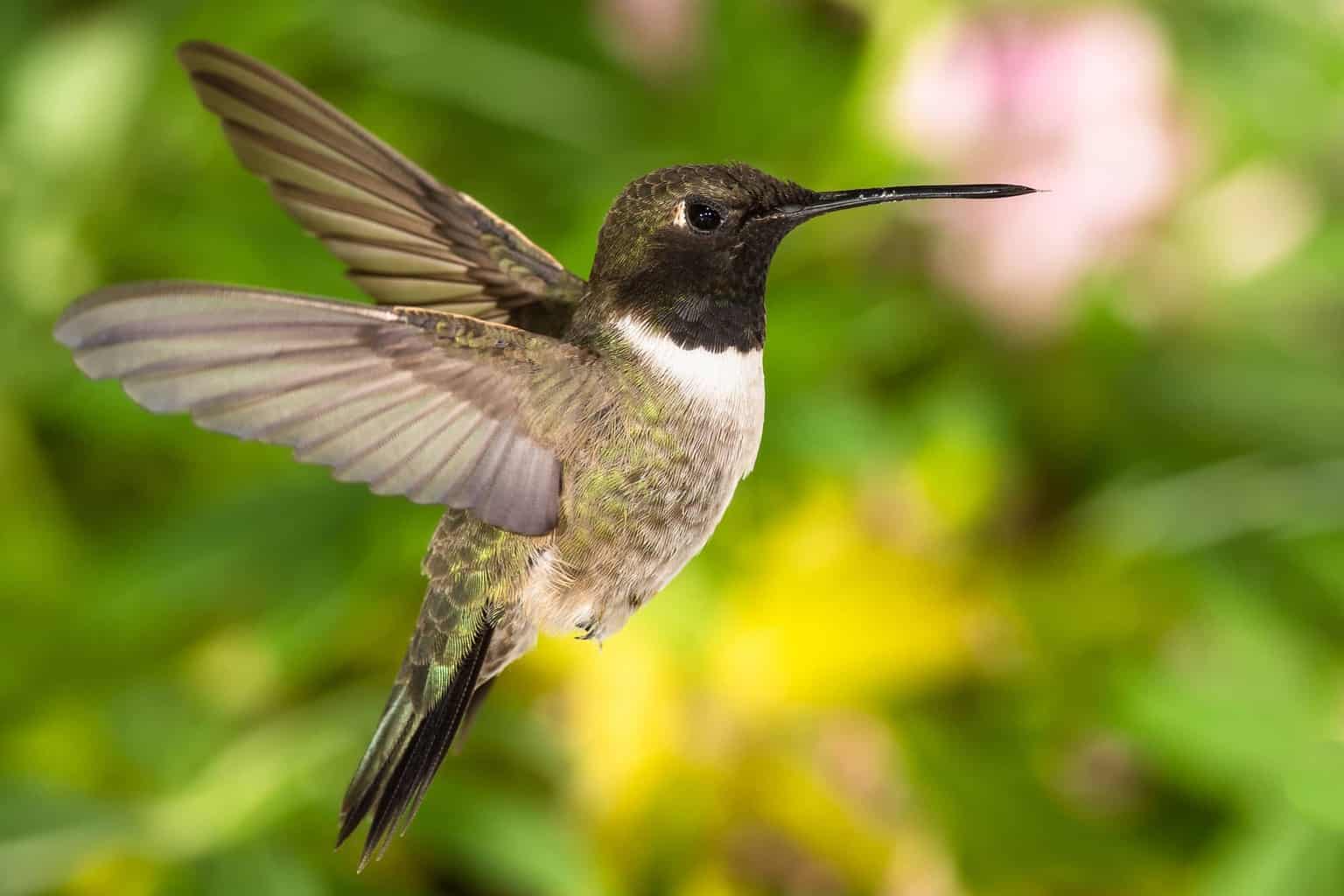
- Scientific Name: Archilochus alexandri
- Length: 3.25 — 3.5 inches
- Weight: 0.1 – 0.2 oz
- Wingspan: 4.3 inches
Description:
Black-chinned hummingbirds have muted metallic green feathers. Males have a silky black face and chin and shimmering purple feathers around their throats, while females have a white, plain throat.
Their stomachs are whitish-gray, and their flanks or sides are glossy bronze-green. The female’s three exterior tail tips are white.
Males display extravagant courtship behavior, descending from 66 to 100 feet in a wide, U-shaped dive and then plummeting past a resting female.
Additional Information:
The Black-Chinned hummingbird is found primarily in the Western United States from Canada to East Oklahoma.
They are migratory and establish wintering grounds along the Gulf Coast and in Mexico.
Like other common hummingbirds, they are useful pollinators with long beaks and tongues that collect nectar from plants, especially from tubular flowers and other native nectar-filled flowers.
The Black-Chinned hummingbird lives an average of 7 to 11 years in mountain ranges, forests, meadows, riverbanks, and orchards.
Calliope Hummingbird
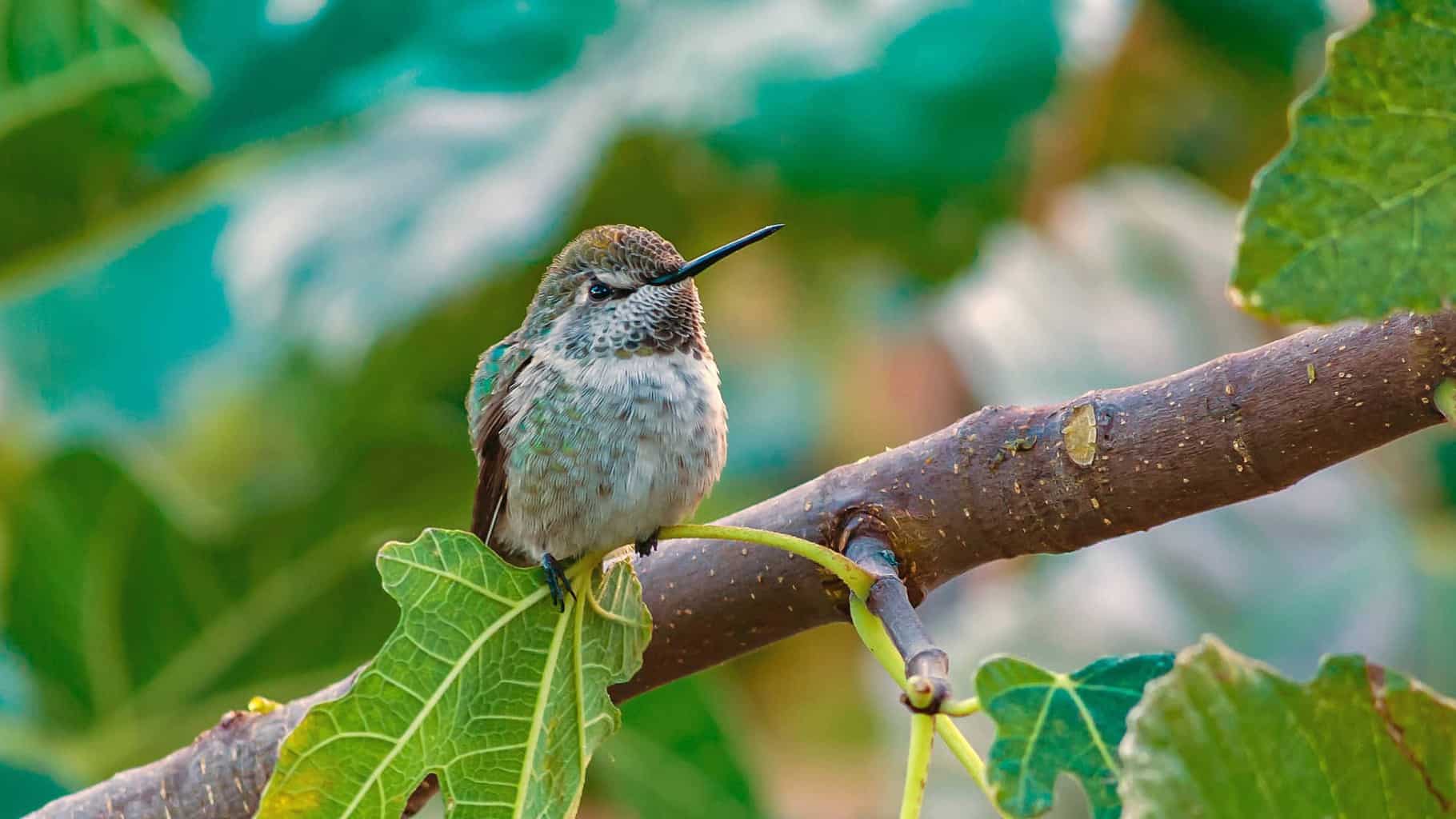
- Scientific Name: Selasphorus calliope
- Length: 3.1 – 3.5 inches
- Weight: 0.1 oz
- Wingspan: 4.1 – 4.3 inches
Description:
The Calliope hummingbird is particularly small, even compared to other species of hummingbirds seen in the U.S. — in fact, it is the smallest bird in the United States.
It has metallic green feathers on its back and a crown with white underpants.
The male Calliope has long streaks of striking magenta feathering underside of its neck, green on its sides, and a dark tail.
Females and juveniles have pink on their flanks and dark tails with white tips.
Additional Information:
Like the Black-Chinned hummingbird, the male makes broad U-shaped dives to attract females; they are otherwise solitary creatures.
They are inherently territorial and aggressive birds, able to successfully ward off larger birds such as Red-Tailed Hawks.
The Calliope migrates roughly 5,000 miles to pine forests in Mexico; they are considered the tiniest long-distant migrant.
They favor high altitudes and soar beside Rocky Mountain ranges as high as 11,000 feet. The oldest recorded Calliope is eight years old.
Mexican Violetear
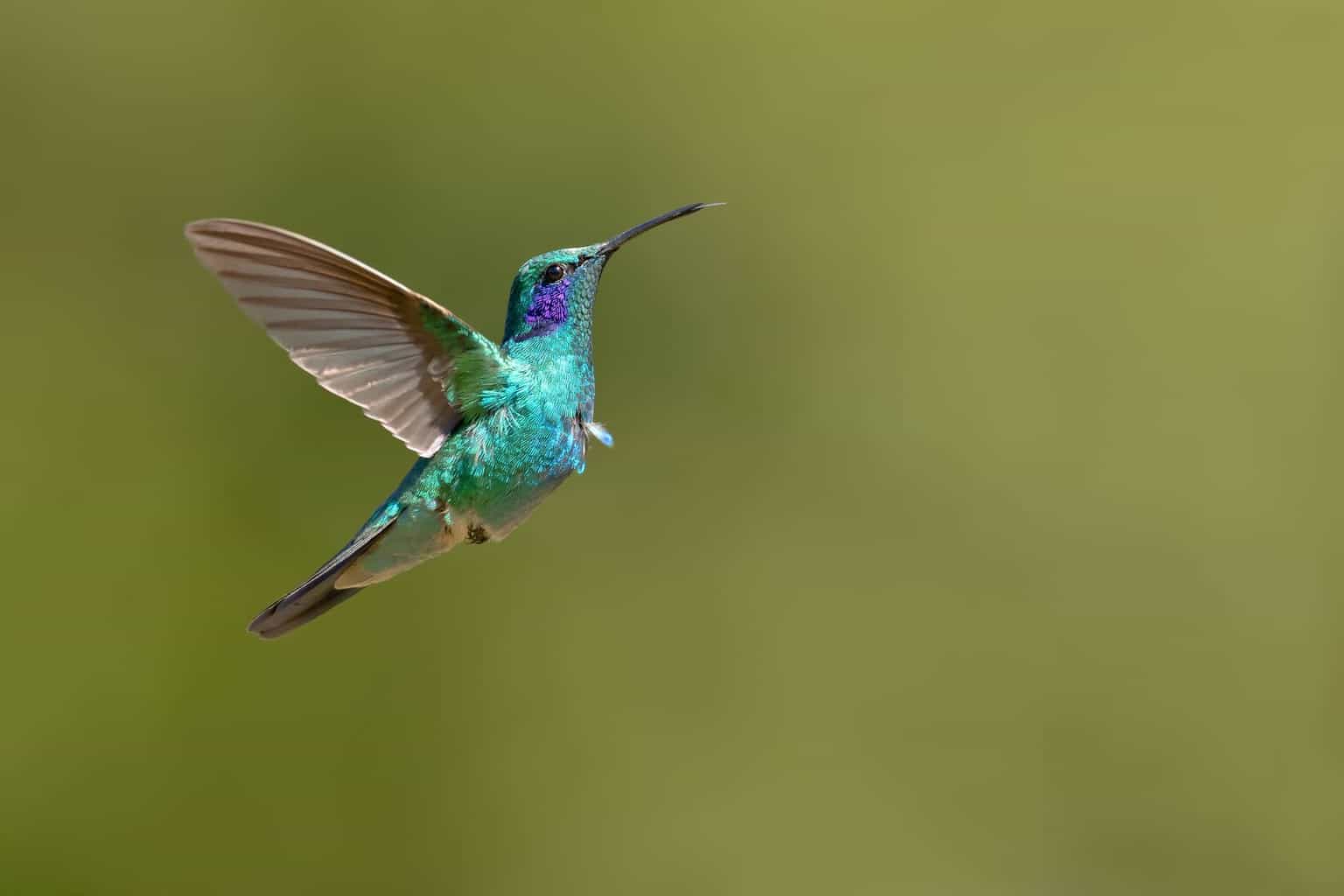
- Scientific Name: Colibri thalassinus
- Length: 3.8 – 4.7 inches
- Weight: 0.17 – 0.20 oz
- Wingspan: 7 inches
Description:
The Mexican Violetear is moderately large for a hummer, with shimmering dark green and blue/violet plumage.
They have glossy violet/blue feathery pockets on either side of their neck; their tails have an intermediate band of black feathers with bronze patches.
Their song is brassy and constant — a sharp, rough sound at one call per second.
Additional Information:
The Mexican Violetear is a vagrant in Maryland and sometimes travels as far as Canada.
These beautiful birds live in the south of Mexico, in the highlands, and Nicaragua, and prefer to live on the edges, clearing and canopying forests, woodlands, and scrubs.
They live at altitudes as high as 10,000 to 13,000 feet in the Andes Mountains’ eastern area and stray down to 500 feet for food.
The Mexican Violetear is solitary and nomadic; they search for food independently except when gathering at flower trees, especially the coffee-shade Inga.
Ruby-Throated Hummingbird
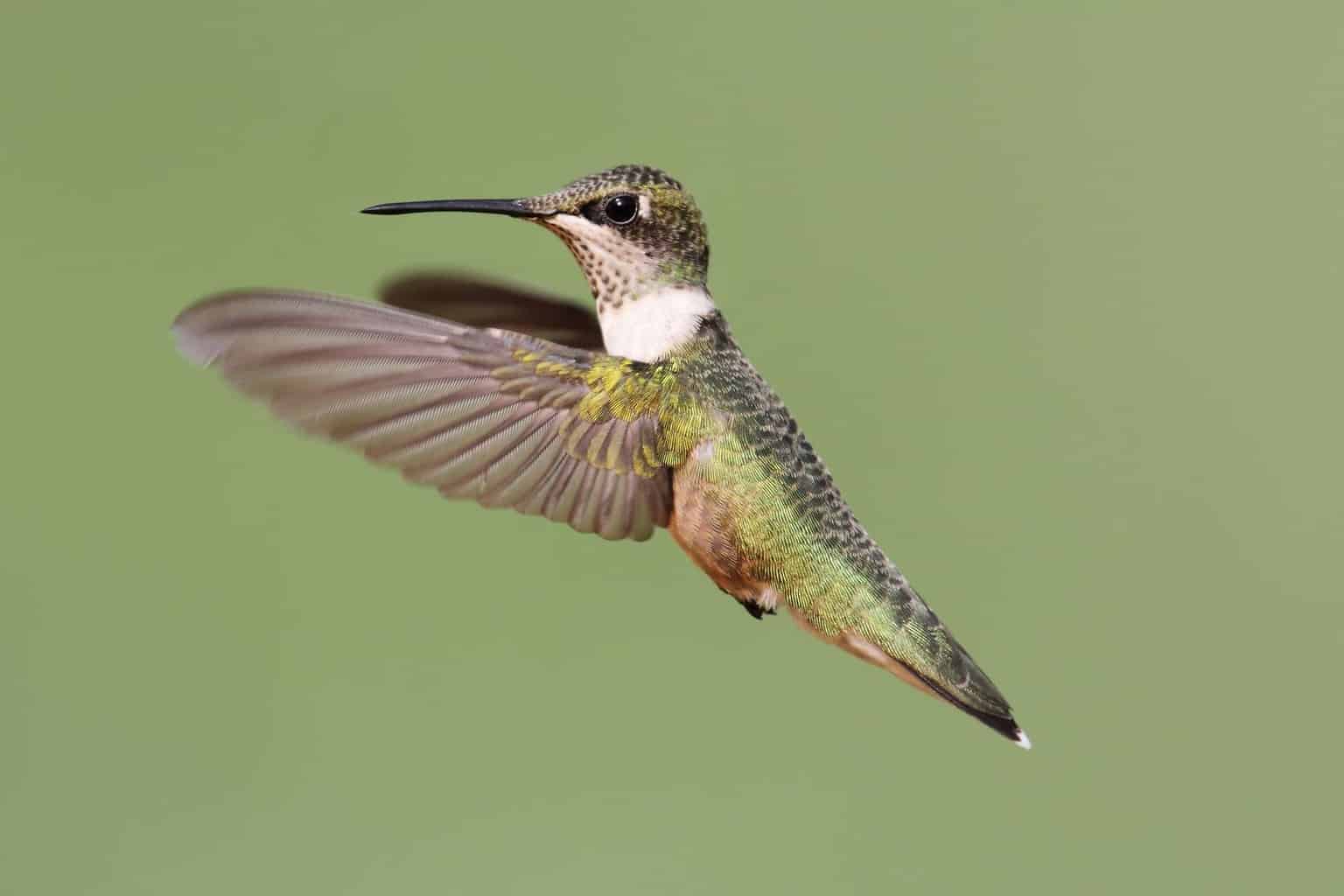
- Scientific Name: Archilochus colubris
- Length: 2.8 – 3.5 inches
- Weight: 0.1 – 0.2 oz
- Wingspan: 4.1 – 4.3 inches
Description:
Ruby-Throated hummingbirds have dazzling golden-green or emerald-green feathers. Males have beautiful orange-red throats, which stand out especially in bright light.
Females, on the other hand, have a greyish throat band and white-tipped wings and underpants.
Ruby-Throated hummingbirds have an outstanding command of flight patterns, beating their wings at a rate of 53 times per second.
Additional Information:
Ruby-Throated hummingbirds are the most common hummingbirds in Maryland; they are the sole hummingbird in the state during breeding season.
During winter, Ruby-Throats prefer the warmer climates of Mexico and Central America.
In spring, after arriving in the United States, they can cover up to 20 miles a day, guided by the budding patterns of colorful flowers.
In the summer, these hummingbirds reside in wooded areas, savannahs, and the suburbs, favoring backyards with nectar feeders and traditional bird baths.
Rufous Hummingbird
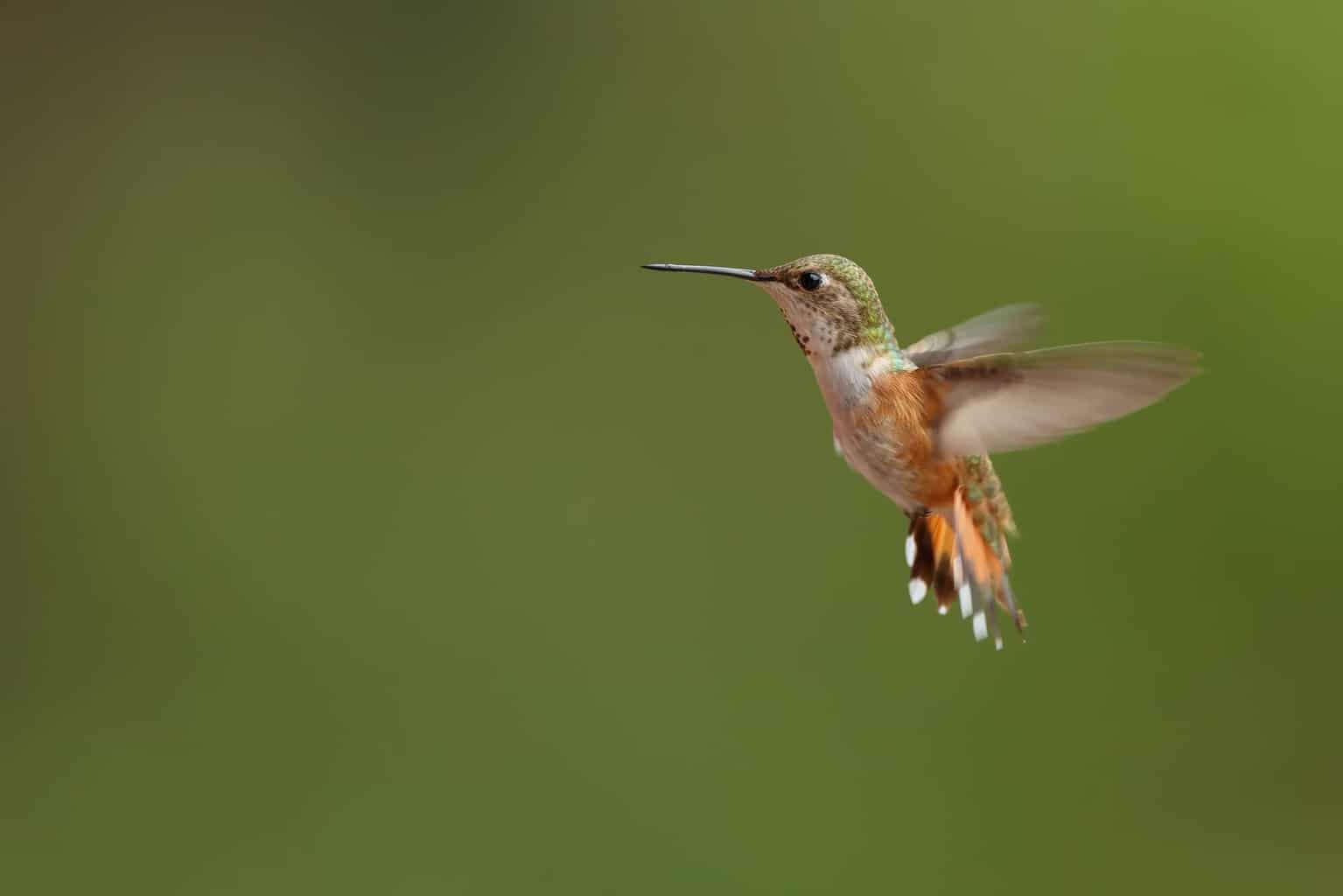
- Scientific Name: Selasphorus rufus
- Length: 2.8 – 3.5 inches
- Weight: 0.71 – 0.76 oz
- Wingspan: 4.3 inches
Description:
The Rufous hummingbird is a brilliant shade of orange and black with an intense red throat band.
Females have green shoulders, and often have orange-feathered throats and black edges to their tails.
Rufous hummingbirds are gifted flyers; hummingbirds are the only birds that can fly backward and upside down. With dexterous ease, they zoom in all directions.
Additional Information:
When the Rufous hummingbird migrates south to avoid winter, they fly as high as 12,600 feet over water to mountainous meadows where they feast on tub-shaped, nectar-filled flowers.
These spectacular birds cover the most extensive range in the Americas and breed further north than any other hummingbird.
The Rufous hummingbird has phenomenal memory recollection for varying locations. Additionally, they are very fierce fighters and very territorial; it gives chase to chipmunks.
Conclusion
As Maryland is positioned on the Eastern coast of the United States, it only boasts two main types of Hummingbirds: the Ruby-Throated Hummingbird and the Rufous Hummingbird. The Ruby-Throated is the only hummingbird that breeds in Maryland.
The Mexican Violetear and Allen’s hummingbird are two vagrants that have been spotted regularly enough to be considered Maryland hummingbirds, however.
Look at other birds that belong to the extensive ecological systems of Maryland.

